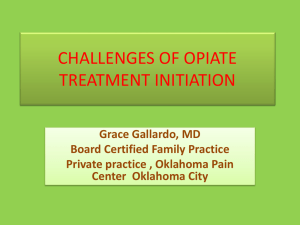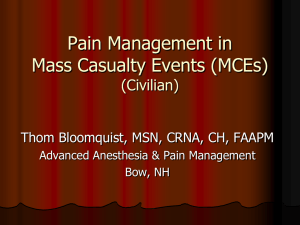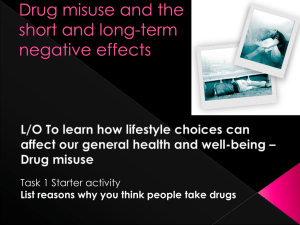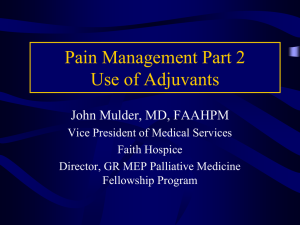Maternal-fetal Opiate Medical Home
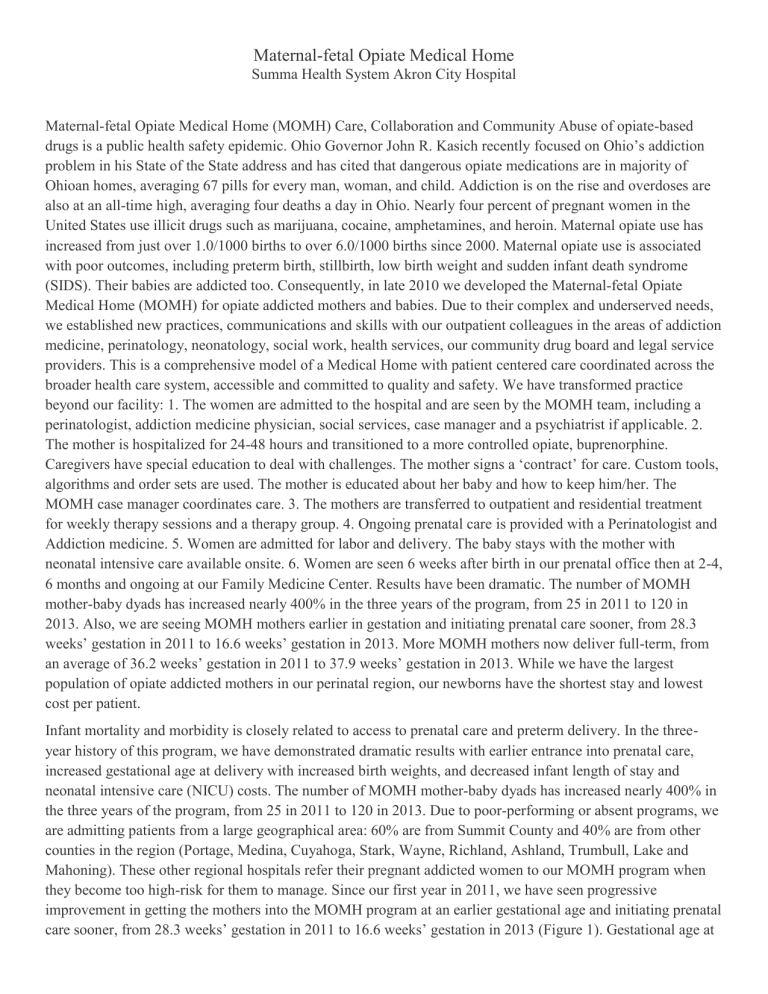
Maternal-fetal Opiate Medical Home
Summa Health System Akron City Hospital
Maternal-fetal Opiate Medical Home (MOMH) Care, Collaboration and Community Abuse of opiate-based drugs is a public health safety epidemic. Ohio Governor John R. Kasich recently focused on Ohio’s addiction problem in his State of the State address and has cited that dangerous opiate medications are in majority of
Ohioan homes, averaging 67 pills for every man, woman, and child. Addiction is on the rise and overdoses are also at an all-time high, averaging four deaths a day in Ohio. Nearly four percent of pregnant women in the
United States use illicit drugs such as marijuana, cocaine, amphetamines, and heroin. Maternal opiate use has increased from just over 1.0/1000 births to over 6.0/1000 births since 2000. Maternal opiate use is associated with poor outcomes, including preterm birth, stillbirth, low birth weight and sudden infant death syndrome
(SIDS). Their babies are addicted too. Consequently, in late 2010 we developed the Maternal-fetal Opiate
Medical Home (MOMH) for opiate addicted mothers and babies. Due to their complex and underserved needs, we established new practices, communications and skills with our outpatient colleagues in the areas of addiction medicine, perinatology, neonatology, social work, health services, our community drug board and legal service providers. This is a comprehensive model of a Medical Home with patient centered care coordinated across the broader health care system, accessible and committed to quality and safety. We have transformed practice beyond our facility: 1. The women are admitted to the hospital and are seen by the MOMH team, including a perinatologist, addiction medicine physician, social services, case manager and a psychiatrist if applicable. 2.
The mother is hospitalized for 24-48 hours and transitioned to a more controlled opiate, buprenorphine.
Caregivers have special education to deal with challenges. The mother signs a ‘contract’ for care. Custom tools, algorithms and order sets are used. The mother is educated about her baby and how to keep him/her. The
MOMH case manager coordinates care. 3. The mothers are transferred to outpatient and residential treatment for weekly therapy sessions and a therapy group. 4. Ongoing prenatal care is provided with a Perinatologist and
Addiction medicine. 5. Women are admitted for labor and delivery. The baby stays with the mother with neonatal intensive care available onsite. 6. Women are seen 6 weeks after birth in our prenatal office then at 2-4,
6 months and ongoing at our Family Medicine Center. Results have been dramatic. The number of MOMH mother-baby dyads has increased nearly 400% in the three years of the program, from 25 in 2011 to 120 in
2013. Also, we are seeing MOMH mothers earlier in gestation and initiating prenatal care sooner, from 28.3 weeks’ gestation in 2011 to 16.6 weeks’ gestation in 2013. More MOMH mothers now deliver full-term, from an average of 36.2 weeks’ gestation in 2011 to 37.9 weeks’ gestation in 2013. While we have the largest population of opiate addicted mothers in our perinatal region, our newborns have the shortest stay and lowest cost per patient.
Infant mortality and morbidity is closely related to access to prenatal care and preterm delivery. In the threeyear history of this program, we have demonstrated dramatic results with earlier entrance into prenatal care, increased gestational age at delivery with increased birth weights, and decreased infant length of stay and neonatal intensive care (NICU) costs. The number of MOMH mother-baby dyads has increased nearly 400% in the three years of the program, from 25 in 2011 to 120 in 2013. Due to poor-performing or absent programs, we are admitting patients from a large geographical area: 60% are from Summit County and 40% are from other counties in the region (Portage, Medina, Cuyahoga, Stark, Wayne, Richland, Ashland, Trumbull, Lake and
Mahoning). These other regional hospitals refer their pregnant addicted women to our MOMH program when they become too high-risk for them to manage. Since our first year in 2011, we have seen progressive improvement in getting the mothers into the MOMH program at an earlier gestational age and initiating prenatal care sooner, from 28.3 weeks’ gestation in 2011 to 16.6 weeks’ gestation in 2013 (Figure 1). Gestational age at
delivery has improved from pre-term to full-term, with an average of 36.2 weeks’ gestation in 2011 to 37.9 weeks’ gestation in 2013. While we have the largest population of opiate addicted mothers in our perinatal region (two inpatient obstetric units and one children’s hospital), our babies have the shortest stay and lowest cost/patient (Table 1).
Our program has been adopted throughout the region by private OB-GYN providers and the outpatient addiction community as the standard of care during pregnancy. Our success is proven with regional recognition and an increase in referrals. The MOMH project is a useful example of the successful implementation of a
Medical Home model in our future of accountable care.
Figure 1
Table 1: Neonatal Abstinence Syndrome (Withdrawal) Babies
Unit # patients
Total patient days
Average days per patient
Total charges Average charges per patient
Campus 1 27 493 18.3 $1,699.945 $62,960.
23.9
17.6
$2,727,251
$2, 786,408
$101,109.
$52, 273.
Campus 2
Campus 3
MOMH program
27
53
646
934
Contact:
Jocelyn Davis DNP,RN,CNM, C-EFM
Nursing Professional Development
Summa Health System Hospitals
330-375-4129 davisjoc@summahealth.org

